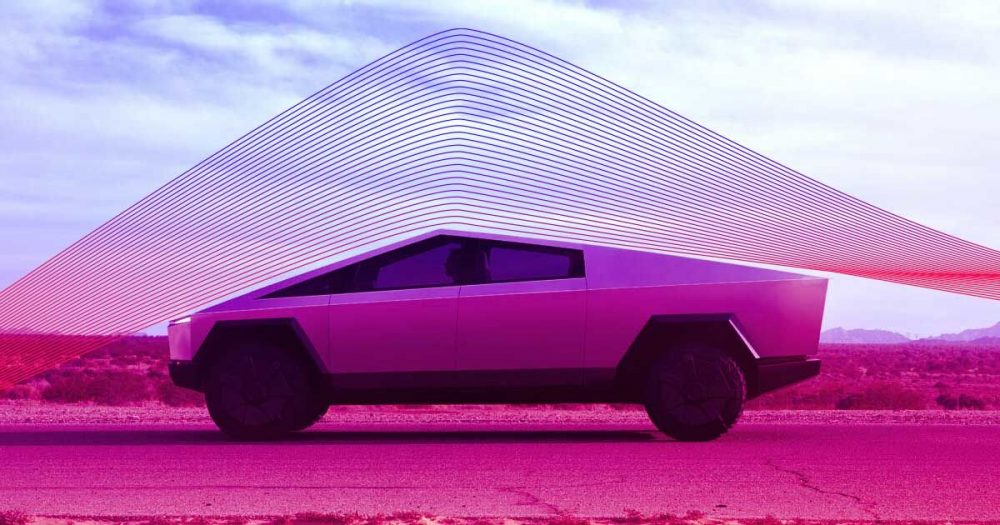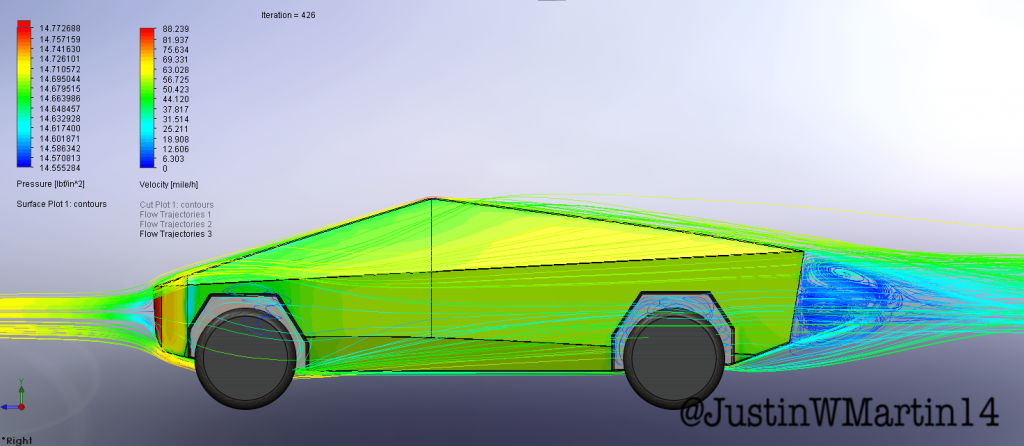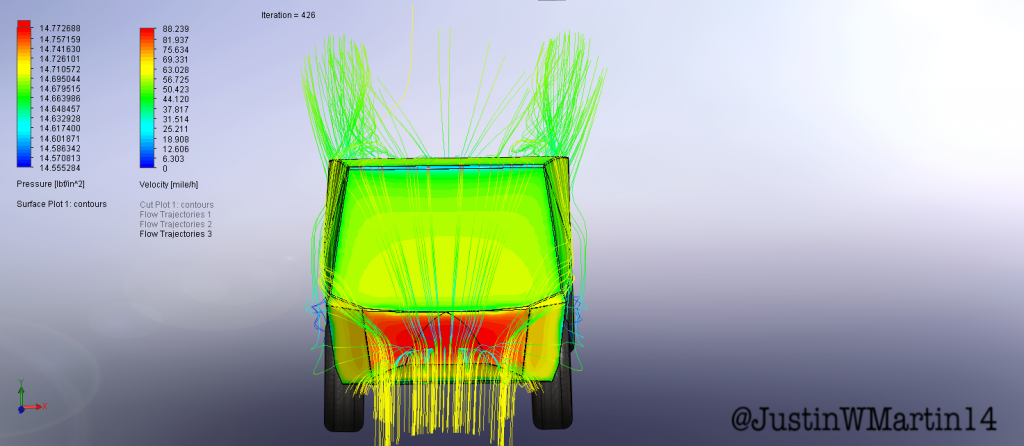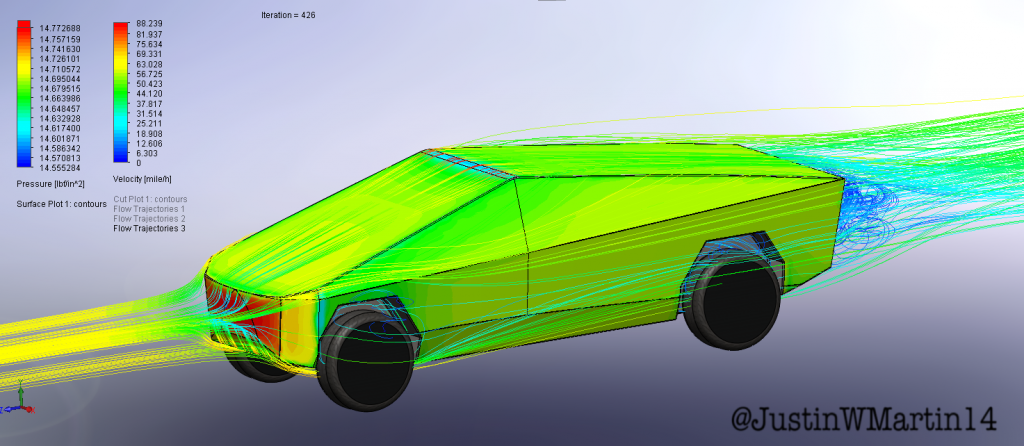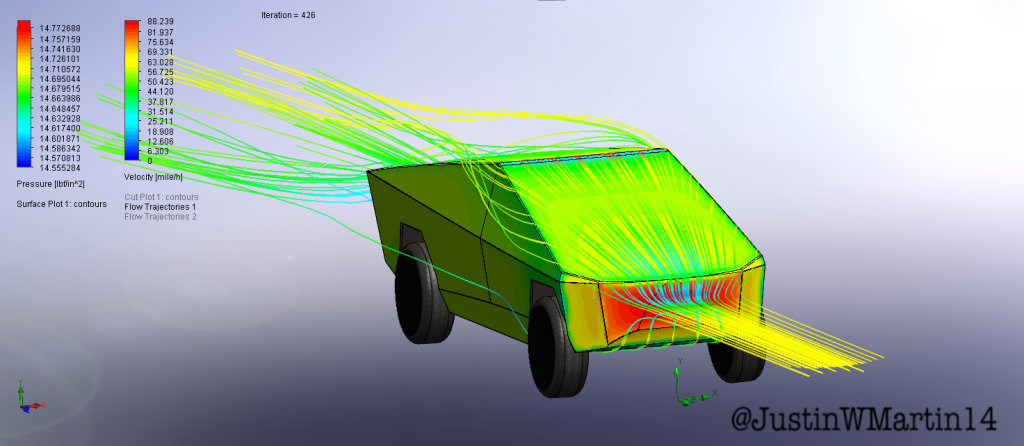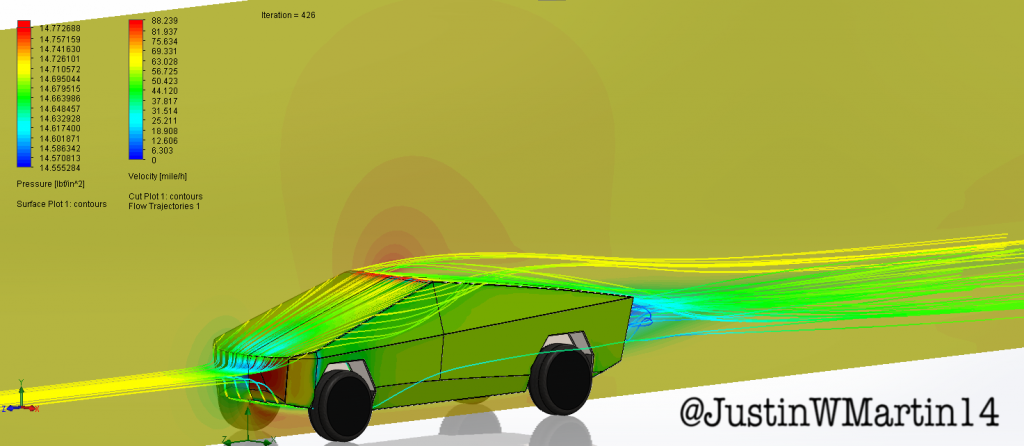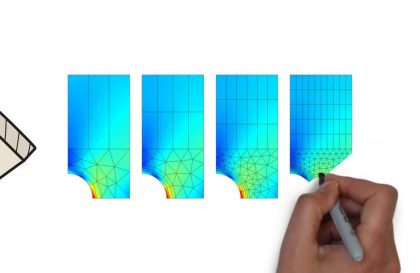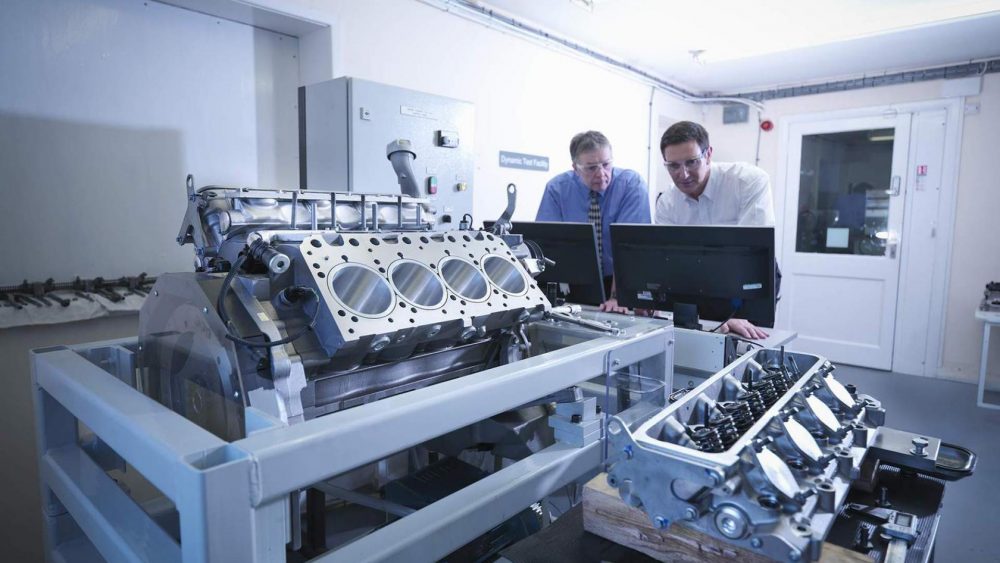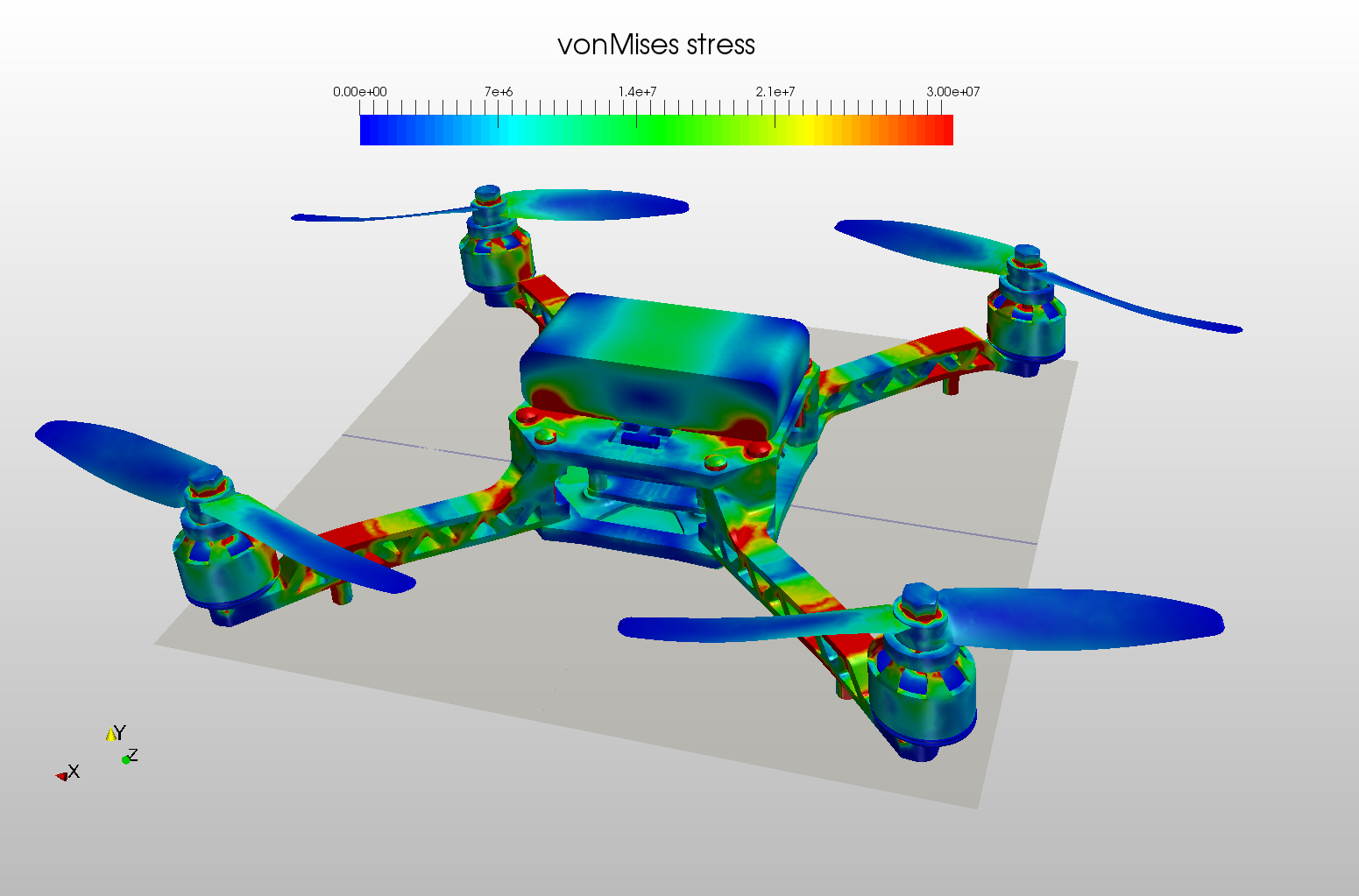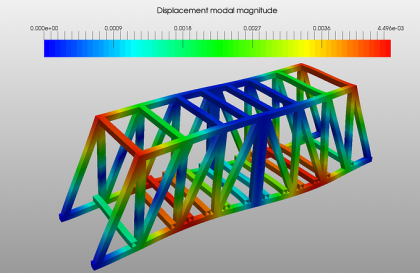On Saturday, Tesla CEO Elon Musk tweeted that “with extreme effort,” the company’s controversial new pickup truck could hit an extremely low drag coefficient — a quantifier often used to denote air resistance — that’d be “insane for a truck.”
In his tweet, Musk claimed the Cybertruck could reach a drag coefficient of 0.3, making it more aerodynamic than the Ram 1500, the most aerodynamic model in the high capacity truck market in 2019, which has a coefficient of around 0.36, according to CNET. Tesla’s Model 3, for comparison, is far more aerodynamic with a coefficient of just 0.23.
Aerospace engineer Justin Martin built a model of the truck from every angle he could see in photos and video of the event. Martin says he researched photos and videos from all angles for around 24 hours before running the simulation. While not everything is perfect, the general body shape of the car is as close as he could get it.
He declined to share a Cd (coefficient of drag) number because his assumptions with the wheels and fenders could affect the result significantly, such that his results were likely conservative. Cd numbers have gotten more popular lately as a rough measure of how efficient a car is (though they don’t mean everything — the cross-sectional area is also important). The worry was that the top edge of the Tesla Cybertruck would cause a turbulent vortex over the entirety of the bed area, which is what happens in a normal pickup truck
But it turns out that Cybertruck’s “vault” works quite well to maintain an attached flow over the top of the car. There’s a bit of a rough point at the very peak of the truck, where airflow reaches 88 mph at a vehicle speed of 65 mph. This does result in some detached airflow (the yellow line behind the truck), but that mostly comes from A-pillar edges where the air blows off the massive windshield:
So our pain points are basically all of the edges of the massive flat windshield and the big front bumper (which is likely required to meet pedestrian safety regulations). Martin thinks the vortex coming from the A-pillars helps to push the air from the peak back down to the vault and reattach the flow.
There is also a huge area of turbulence behind the closed truck bed, but most vehicles do have some amount of drag there, especially trucks. The ideal aerodynamic shape would be a perfect teardrop with a very pointy rear end, but this is not practical (or legal, for safety reasons).
Finally, the fenders/wheels are also an open question, as Martin wasn’t able to model them accurately with the information he had.
Though there are limitations to Martin’s model here, it’s a good rough first guess. And as far as this guess goes, the truck seems to have better aero than initial visual impressions might have suggested.
Source: electrek


